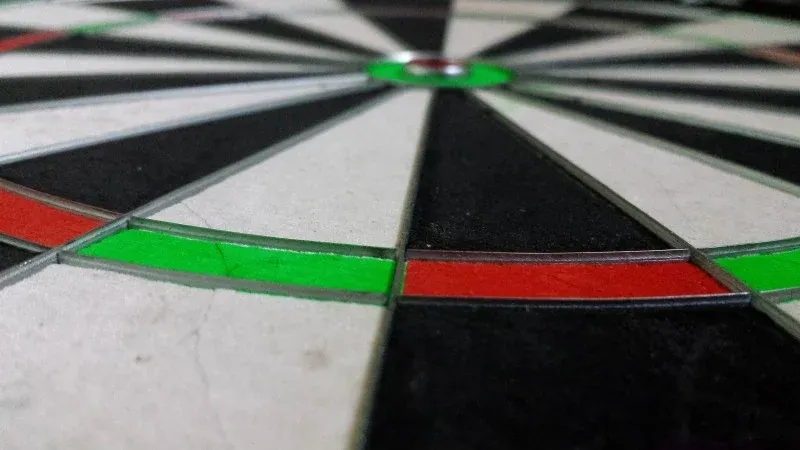How to hang a dartboard: Complete guide for the perfect setup
08/15/2025
How to hang a dartboard: Complete guide for the perfect setup
Want to hang a dartboard at home but not sure where to start? In this comprehensive guide, you will learn step-by-step how to hang a dartboard – including the official dartboard distance, dartboard height, and all dartboard setup measurements according to professional standards. You’ll also get practical tips for beginners and smart ways to hang a dartboard without drilling.
Whether you are a beginner or want to make your existing dart setup more professional, this guide gives you all the information you need. We also answer frequently asked questions about hanging a dartboard and provide helpful maintenance tips to keep your dartboard in top condition longer.
Choosing the perfect spot for your dartboard
Sufficient space: Ideally at least 8 × 12 feet (2.5 × 3.5 meters) of clear playing area.
Safe environment: Avoid expensive furniture, high-traffic areas, and windows.
Sturdy wall: Preferably a solid wall that can also dampen the sound of darts.
Tip: Want to hang a dartboard without drilling? Use a no-drill mounting system or a dartboard stand. Also, consider a dartboard surround to protect both your wall and your darts.
Setting the official dartboard height and distance
Dartboard height: 5 feet 8 inches (1.73 meters) from the floor to the center of the bullseye.
Dartboard distance to throwing line (oche):
Steel tip darts: 7 feet 9 1/4 inches (2.37 meters)
Soft tip darts: 8 feet (2.44 meters)
Diagonal measurement: 9 feet 7 3/8 inches (2.93 meters steel tip) or 9 feet 9 1/4 inches (2.98 meters soft tip) from bullseye to front of oche.
Extra tip: Use a dart mat with oche markings to ensure the correct distance every time you play.
Step-by-Step dartboard hanging Guide
Step 1 – Mark the Spot
Measure 5 feet 8 inches (1.73 m) from the floor and mark the center (bullseye).
Measure 7 feet 9 1/4 inches (2.37 m) steel tip or 8 feet (2.44 m) soft tip from the front of the board for the throwing line.
Step 2 – Mount the Bracket
Place the bracket with the opening facing up exactly on the marked spot.
Screw it in securely using the supplied screws.
Step 3 – Prepare the Board
Screw in the center screw at the back of the board.
Insert rubber spacers to prevent wobbling.
Step 4 – Hang the Board
Hang the board on the bracket with the "20" at the top.
Check with a level to ensure the board is perfectly straight.
Professional dartboard maintenance tips
Proper maintenance significantly extends the life of your dartboard, especially with frequent use or multiple players.
Rotate the board regularly: Turn the board so frequently used segments like the triple 20 are swapped with less-used areas. This prevents bulging and loose wiring.
Pay attention to dart points: Coarser points hold darts better but pull fibers faster. Balance the pros and cons for board longevity.
Protect and store: Use a surround to prevent wall damage and store the board in a dry place to avoid warping.
Extra tip: Check out our video with dartboard maintenance tips to get the most out of your board.
Frequently Asked Questions (FAQ)
What is the official dartboard height?
The official height is 5 feet 8 inches (1.73 meters) from the floor to the center of the bullseye.
What is the correct distance from the dartboard to the throwing line (oche)?
7 feet 9 1/4 inches (2.37 meters) for steel tip and 8 feet (2.44 meters) for soft tip darts, measured from the front of the board.
How do I hang a dartboard without drilling?
Use a dartboard stand or no-drill mounting system to prevent wall damage.
How can I best maintain my dartboard?
Rotate the board regularly for even wear, use a surround, and choose dart points wisely for longer board life.
Summary
With this step-by-step guide on how to hang a dartboard, you have everything you need: correct height, distance, setup measurements, maintenance tips, and FAQs. Start playing right away with a setup that lasts.
Watch the full instructional video here:



